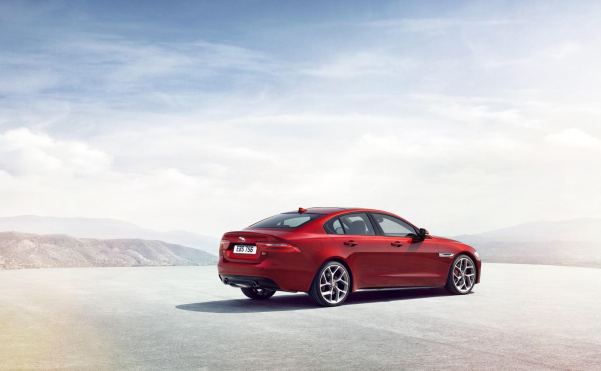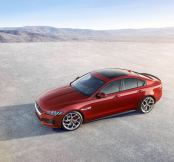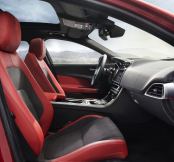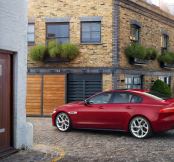Jaguar takes on the German establishment with its £27k XE
2014-10-07 16:59:42
A glittering ceremony in London – involving the use of a helicopter and a musical theatre production – marked the end of the seemingly endless stream of teasers and moved instead toward the official introduction of the new Jaguar XE, the compact executive car which the company hopes will bloody the noses of Audi’s A4, BMW’s 3-series and Mercedes-Benz’s C-class.
As such, the XE is arguably the most important car Jaguar has launched in recent decades. The XE is the car designed to transform Jaguar from a low-volume manufacturer to a major player, and therefore it needs to capture the imagination of would-be buyers and introduce them to the ‘Jaguar way of doing things.’
The much-vaunted compact executive car is a 4-door sports saloon which seats five, has a big boot and a huge range of engines and trims.
Underpinning the XE is an aluminium-intensive platform that has hollow-cast aluminium for the suspension to provide lightness whilst retaining the necessary stiffness. The front suspension is related to the F-Type’s double-wishbone setup, whilst at the rear, an independent multi-link arrangement has been adopted.
But it is the engine line-up that is perhaps of the most significant importance to the future success of the XE, and to Jaguar itself. Until now, the engine’s used have been languishing behind their rivals in terms of emissions and economy – the two most important factors for the lucrative fleet market. The modular ‘Ingenium’ family of engines have been developed by JLR to address these issues and are alterable in 500cc increments with the added capability of being incorporated into hybrid units. The engines are built at a state-of-the-art facility in Wolverhampton that has cost the company £500 million and helped create 1,400 new jobs.
The Ingenium family of engines are lightweight – a huge 80kg lighter than the company’s existing four-pot engines. The first and most important of these from the viewpoint of EcoCars4Sale is a 2.0-litre 4-cylinder turbo-diesel unit that produces 161bhp. Thanks to its light weight and use of low-friction internal materials, this is the cleanest engine not just in the range, but also offers the lowest carbon dioxide emissions of any model in its class at just 99g/km of CO2. At the same time it manages to return 75mpg.
Other, higher powered diesel variants will also become available for those who need more poke. However, currently Jaguar have refused to provide further details.
A 2.0-litre 4-cylinder turbocharged petrol unit from the Ingenium family is also available. Once again, several derivatives will become available, the details of which will follow once Jaguar has confirmed the line-up. What we do know is that each version will be offered with an 8-speed ZF automatic gearbox seen in other Jaguar offerings. The key word in this sentence is “offered”, because for the first time in six years, a Jaguar will be made available with a manual gearbox too – a 6-speeder. This will also find its way into the F-Type in the not-too-distant future, as well.
Whilst a lot of the focus has been on engine development, Jaguar hasn’t ignored other important aspects of the XE. For example, the compact executive car is the most aerodynamic car Jaguar has ever produced with a drag coefficient of just 0.26. This has been achieved through the widespread introduction of aerodynamic tricks like an under-floor shield or a rear diffuser. Some models will also get what are known as active vanes in the front grille. These will shut at predefined speeds in an effort to help the car cut more cleanly through the air.
All of this helps to emphasise just how important the XE is to Jaguar’s future. It is no exaggeration to suggest that it really is a “make-or-break” car for the company.
This is an abridged article especially prepared by first4auto.com on behalf of EcoCars4Sale.
Reported By
Andrew Merritt-Morling
Chief Editor











